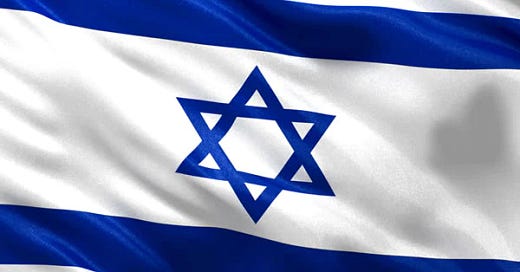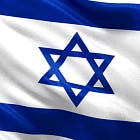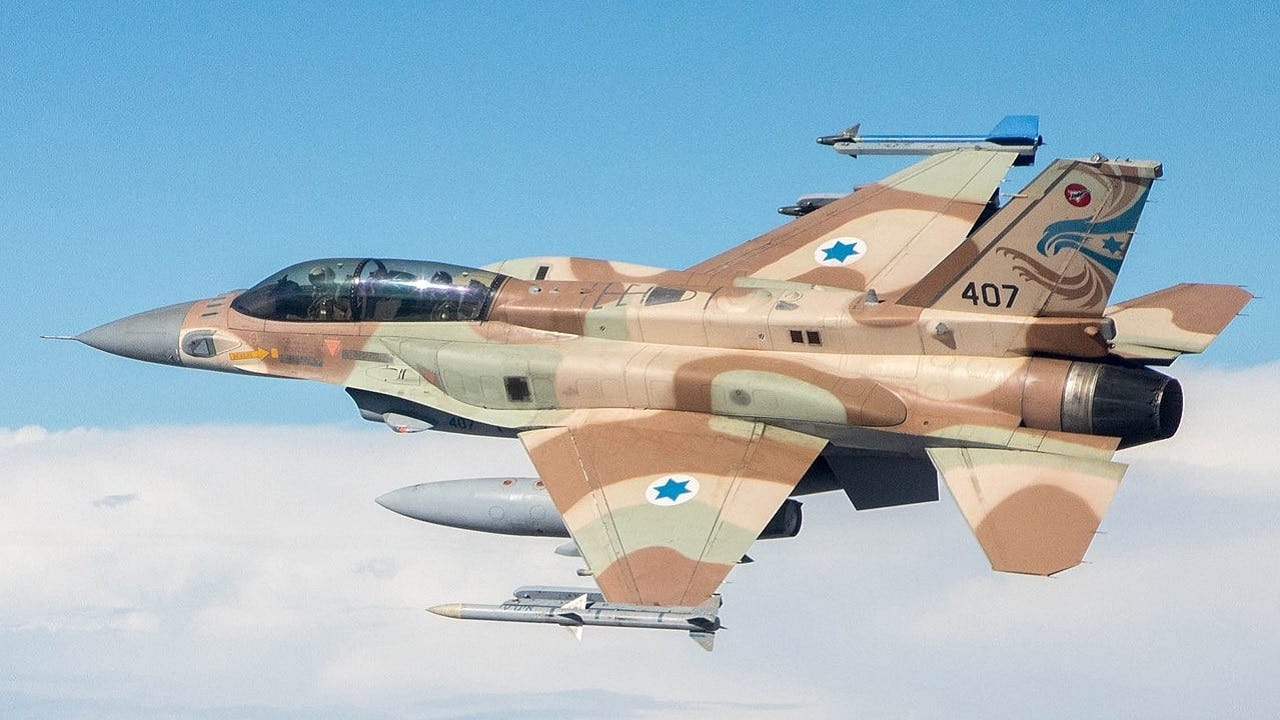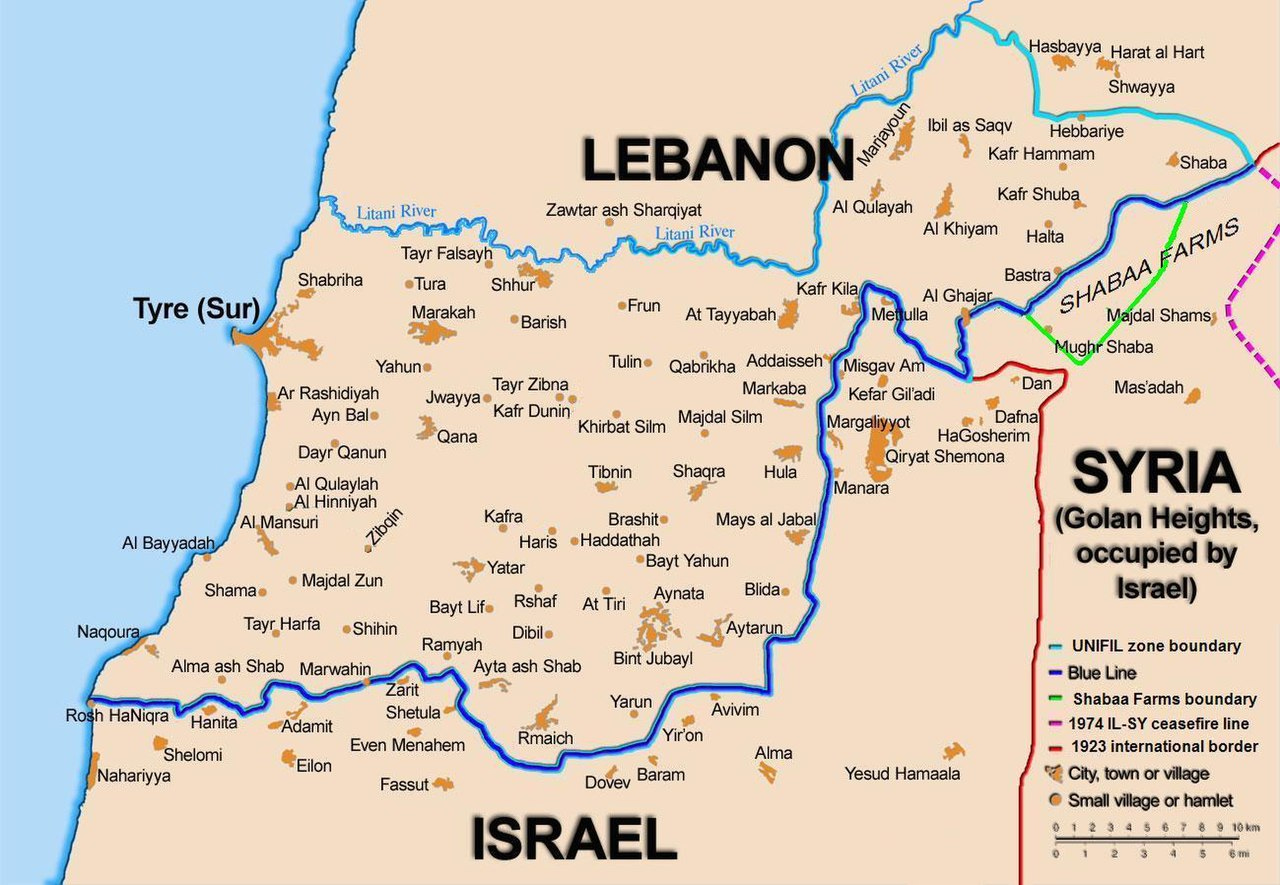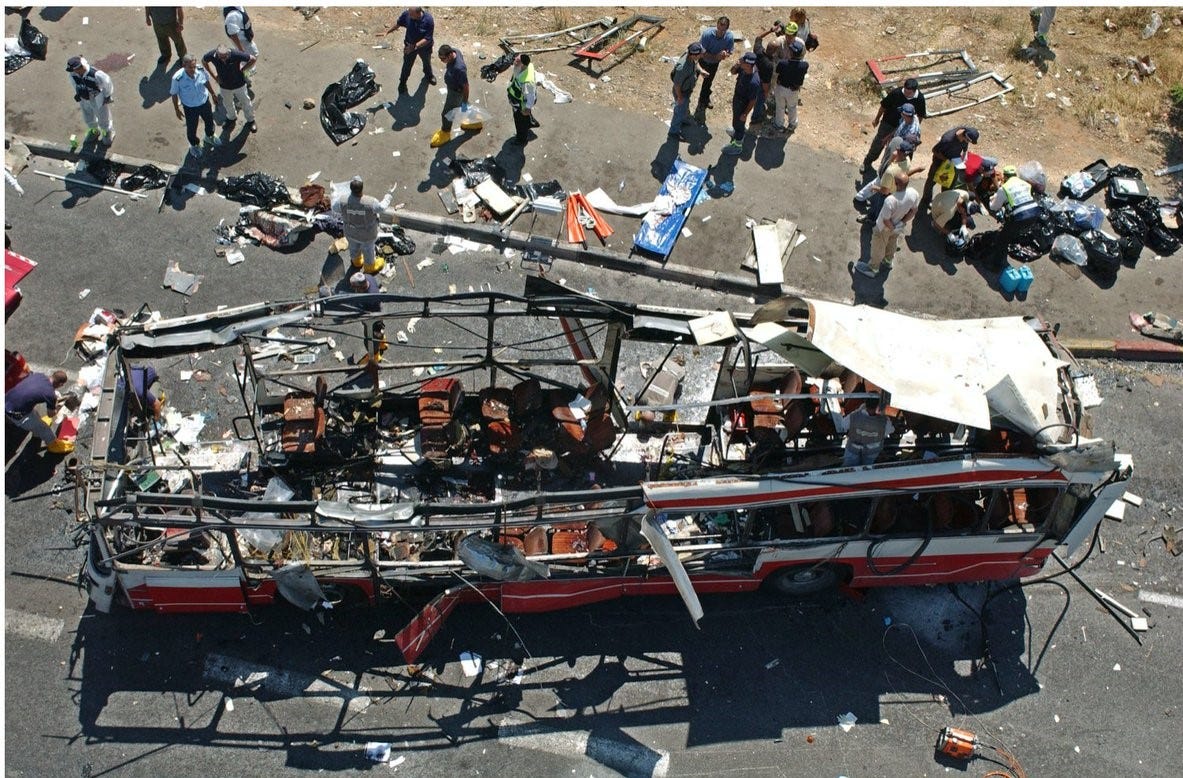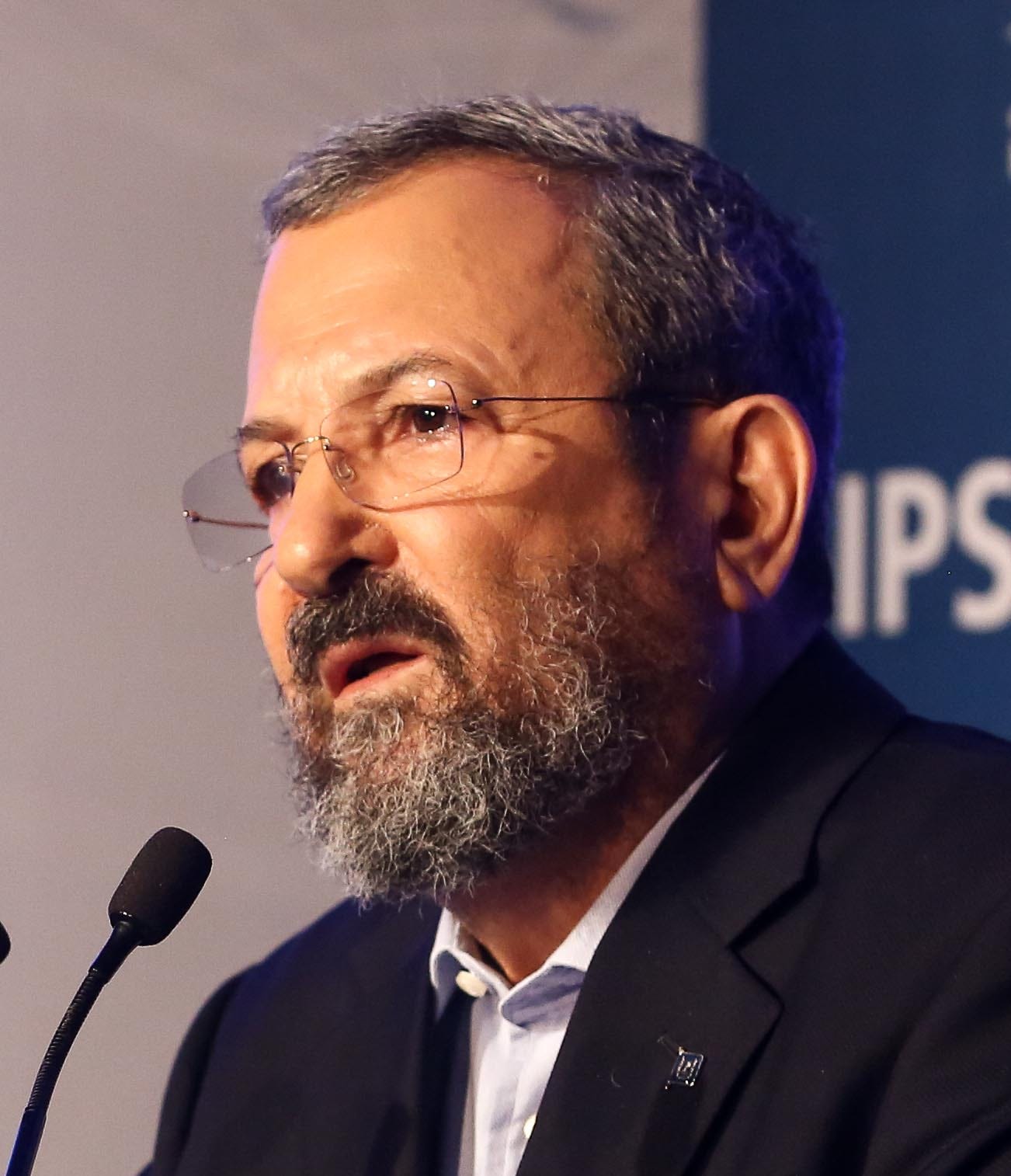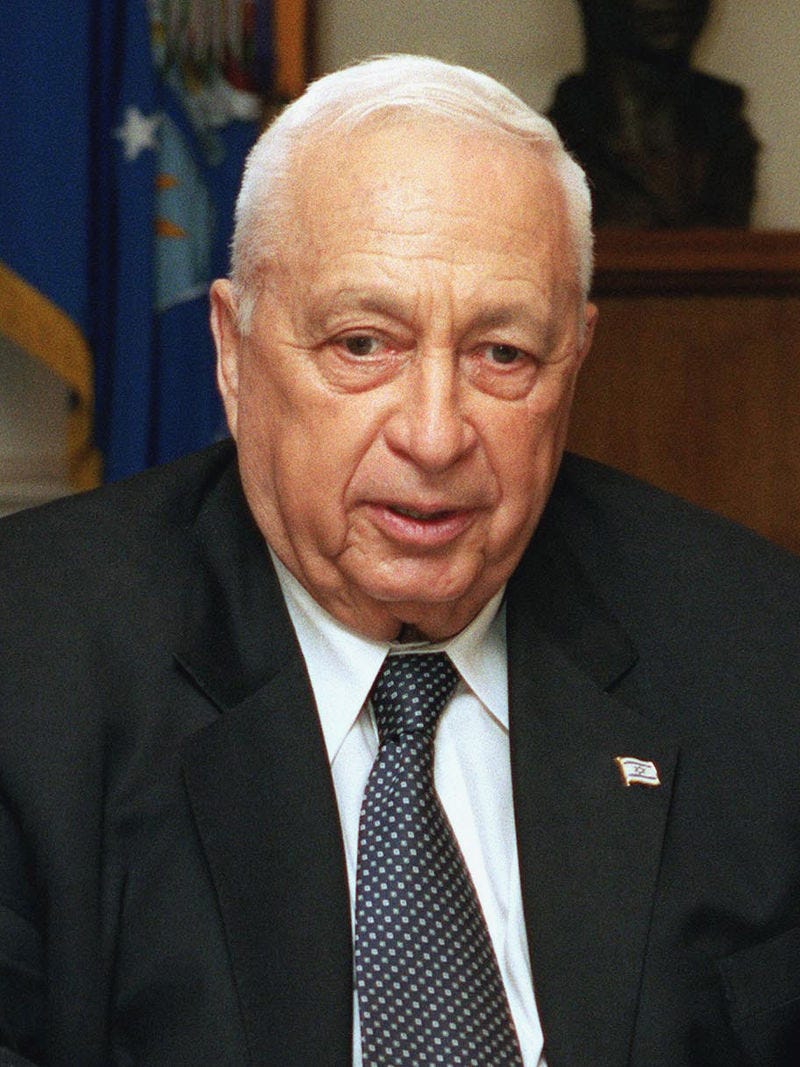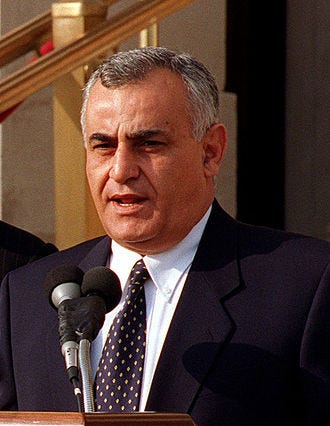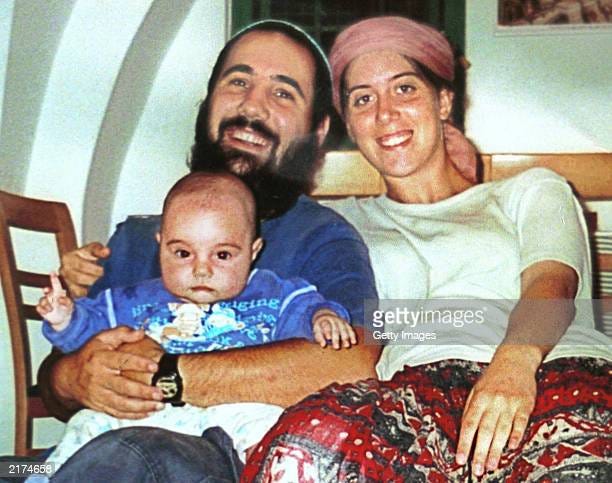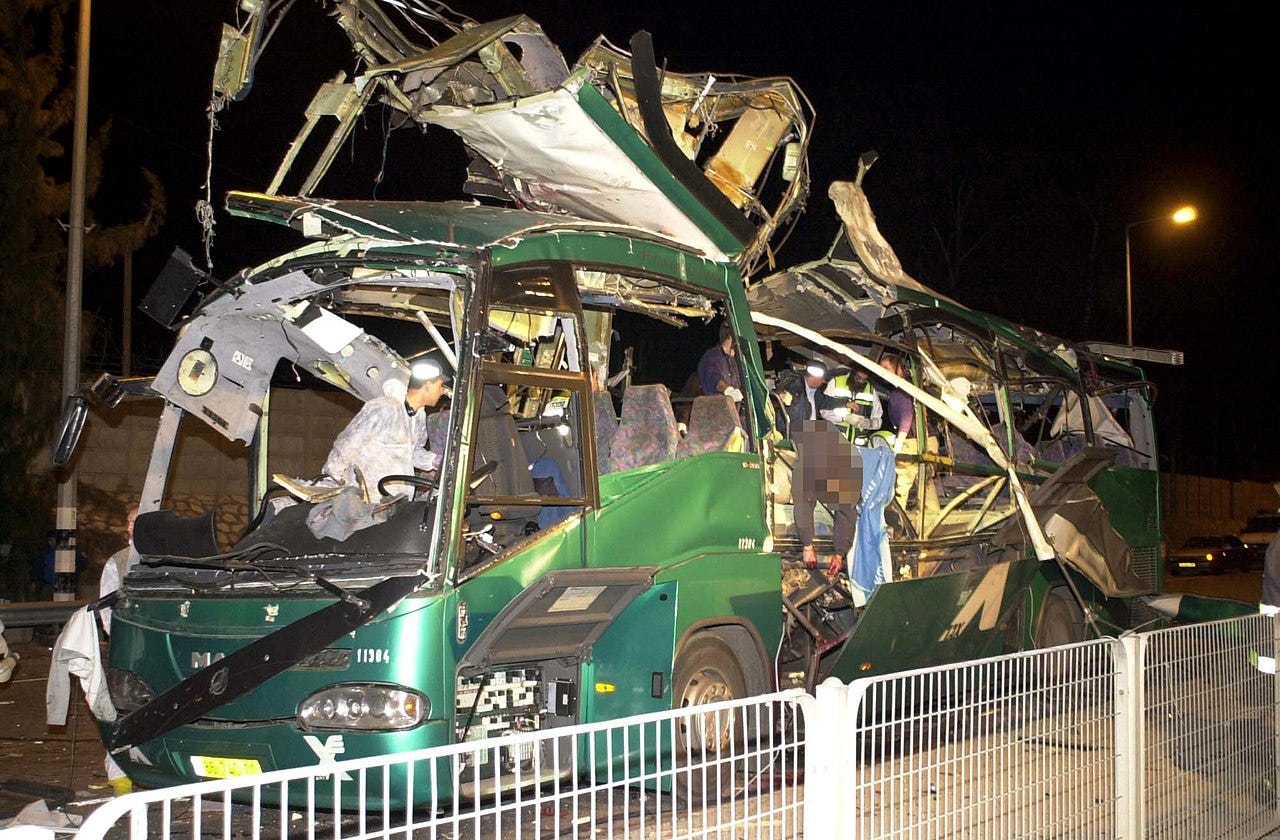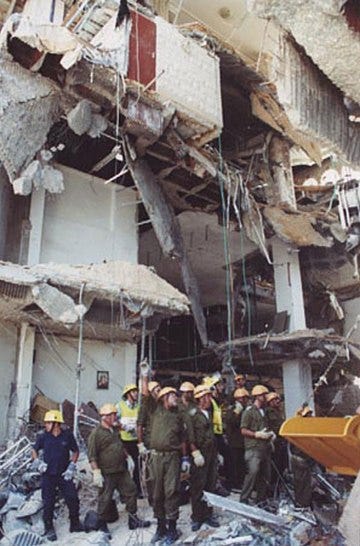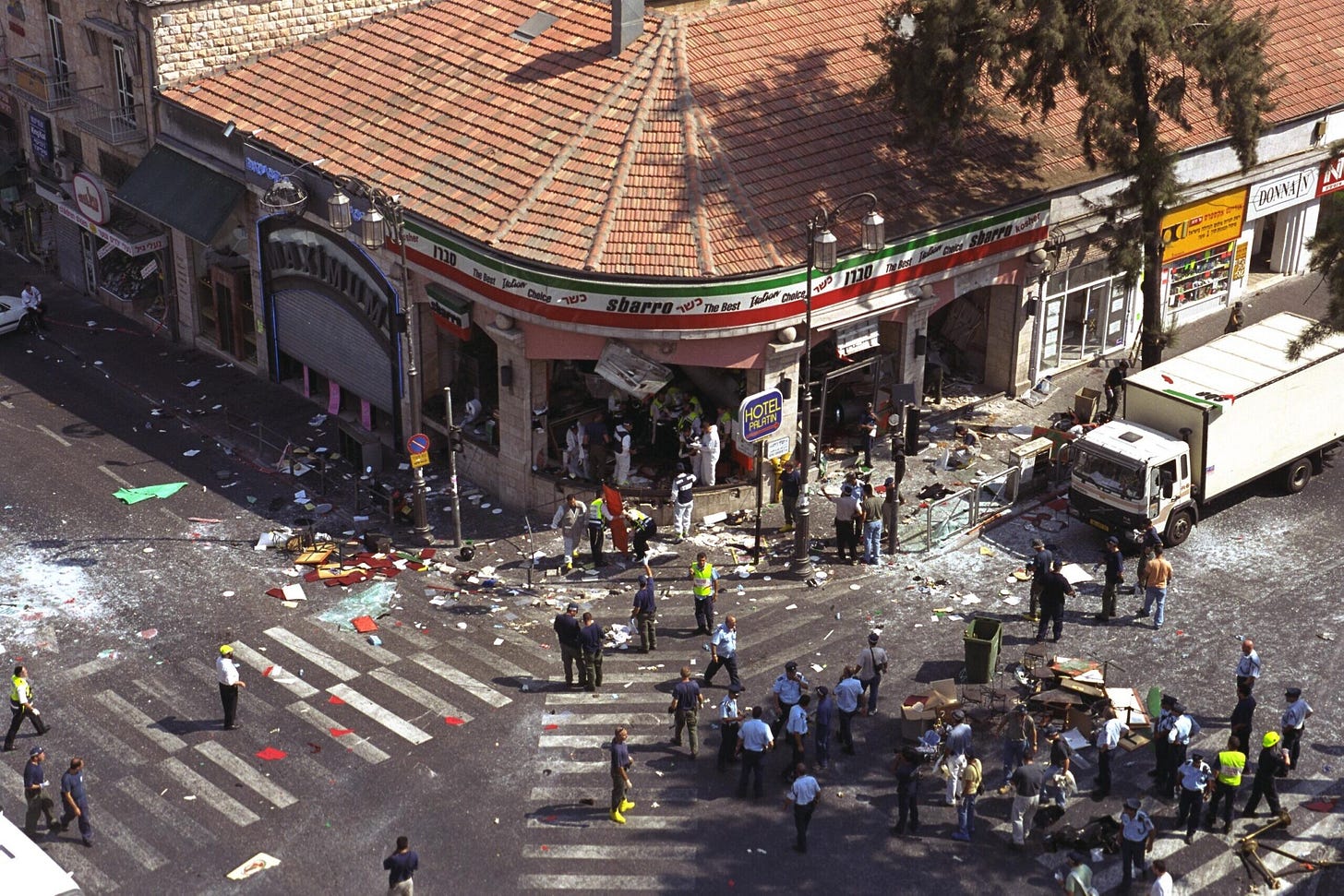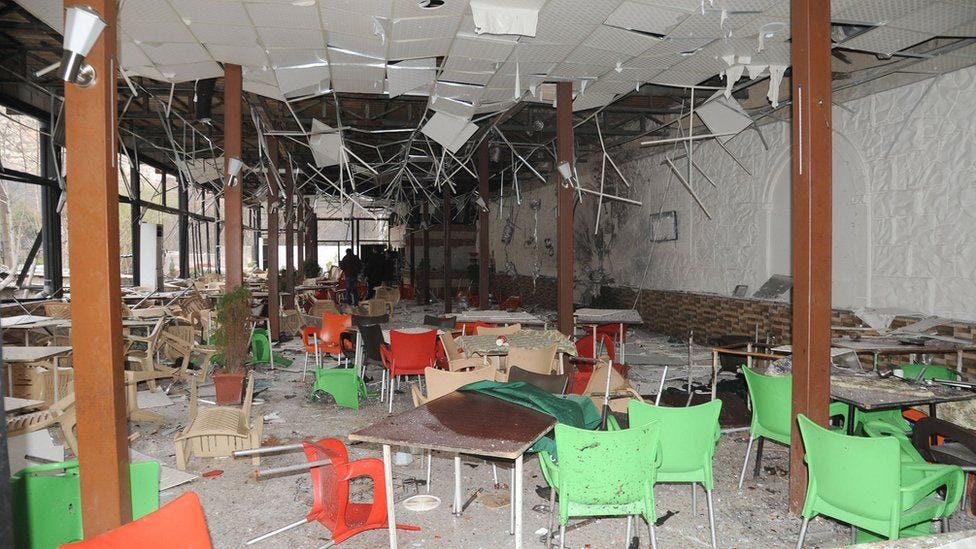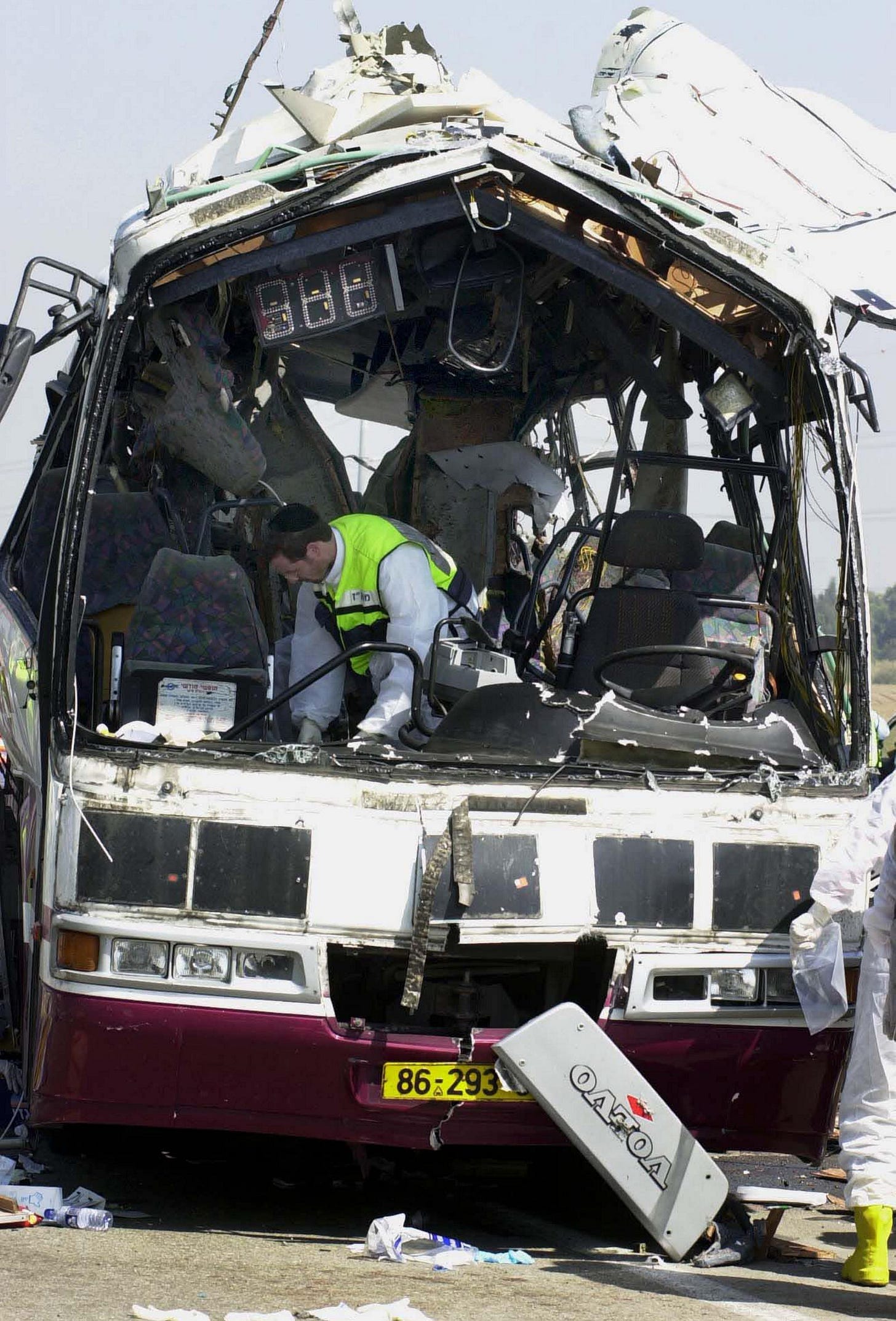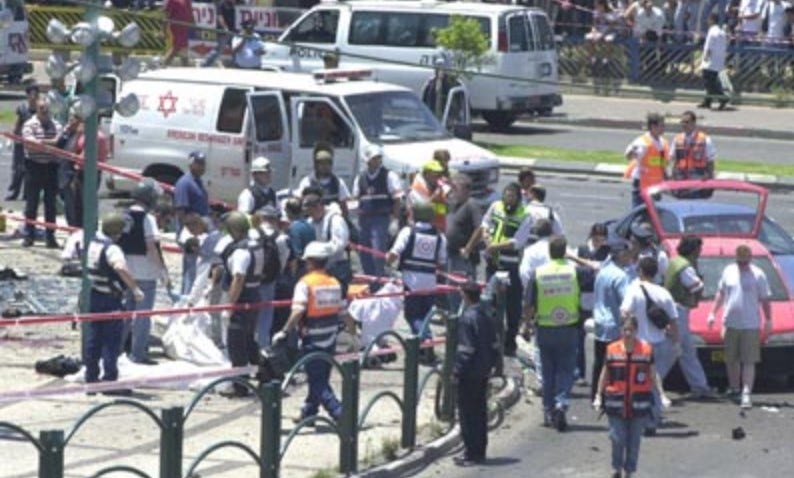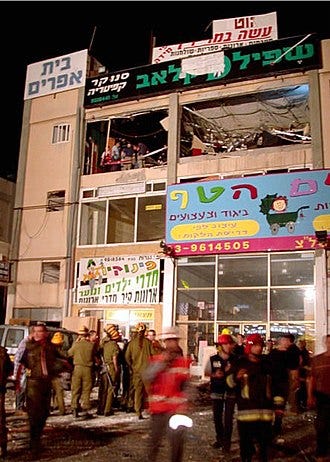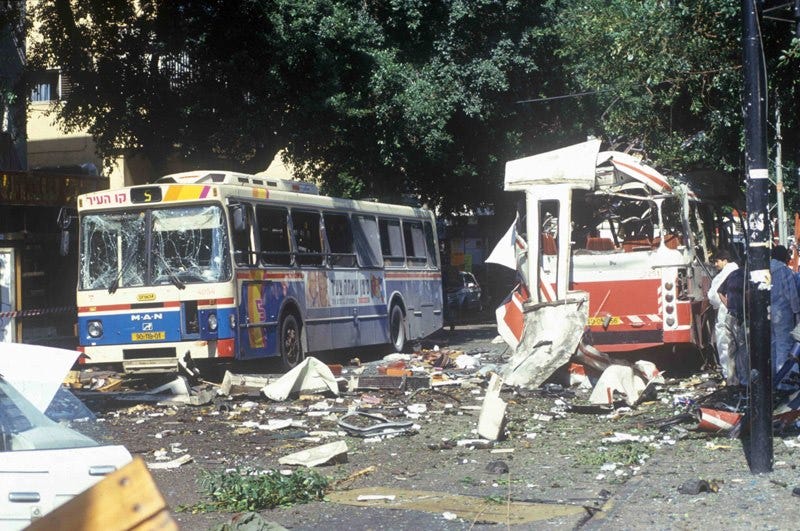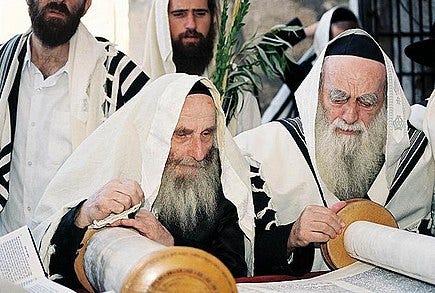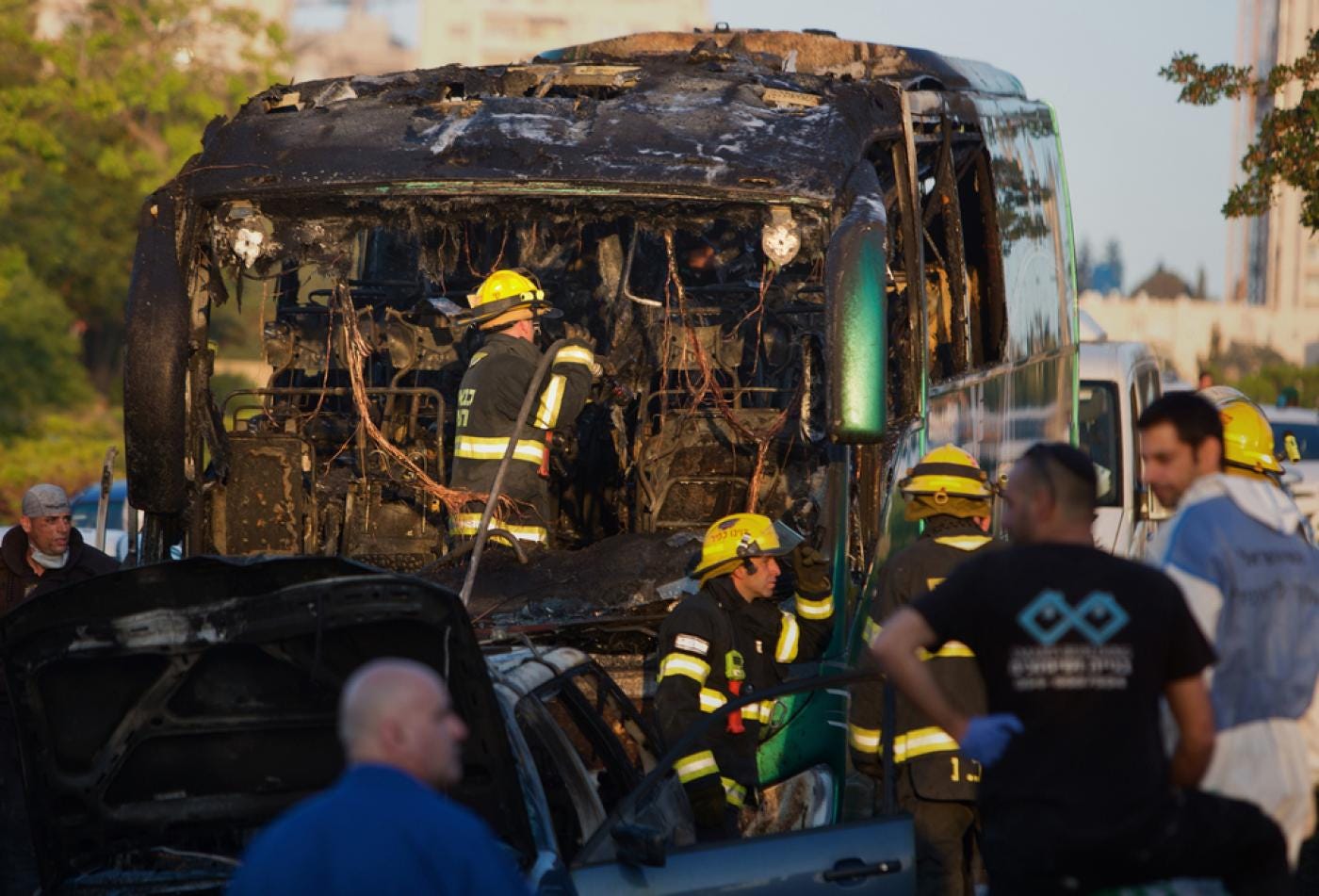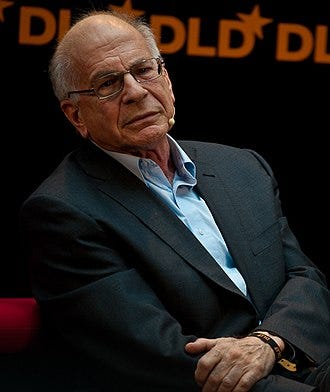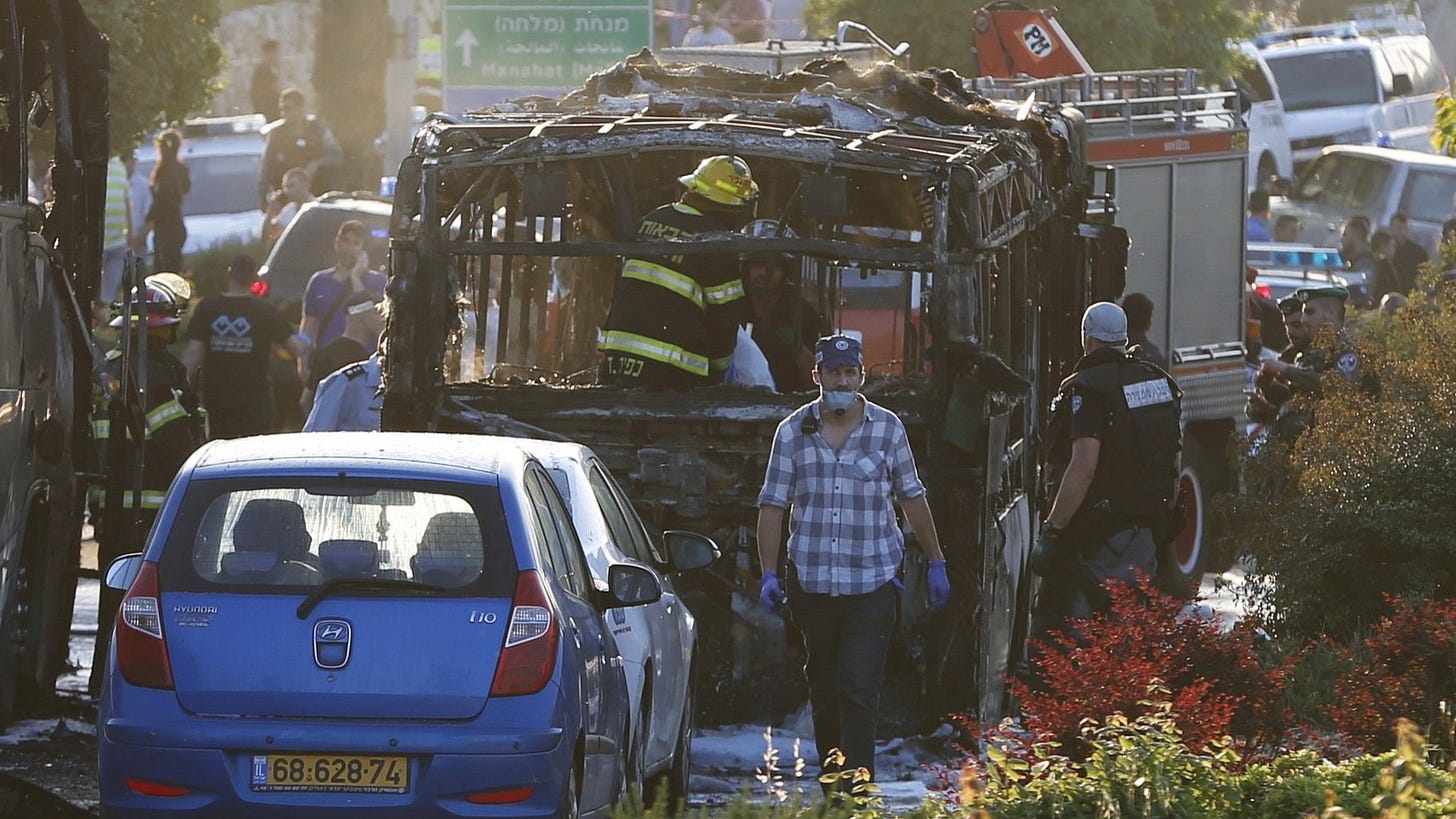Last time I visited your inbox, I went through the years 1990 to 1999 in the history of Israel. Click the link below if you missed it.
Today I will be looking at the very bloody years of 2000-2002. I want to add a disclaimer to this post. It recounts a horrific number of attacks on both Arabs and Jews, it can get a little heavy and the images are sometimes graphic. Just bear that in mind!
2000
January 3–10 2000: Israel and Syria hold peace talks in Shepherdstown West Virginia. Israeli Prime Minister Ehud Barak led the Israeli delegation and Foreign Minister Farouk al-Sharaa leads the Syrian delegation. No substantial agreements are reached and negotiations to re-start the talks fail.
January 28 2000: Yes, the only satellite television provider in Israel, begins broadcasting.
March 12–26 2000: Pope John Paul II visits Israel. During his visit, the Pope visits Yad Vashem (Israel’s National Holocaust Memorial) and the Western Wall, placing a letter inside it in which he prayed for forgiveness for the actions against Jews in the past.
March 27 2000: An IAF F-16 of the 109th Squadron crashes into the Mediterranean during a training flight. The pilot, Major Yonatan Begin, was the son of Knesset member Benny Begin and grandson of former Prime Minister Menachem Begin. Neither Begin or his co-pilot, Lieutenant Lior Harari, had notified ground control of any problems.
March 28 2000: A police investigation recommends that former prime minister Benjamin Netanyahu and his wife be indicted on criminal charges of fraud, bribery, theft of state gifts and obstruction of justice.
May 25 2000: The last IDF forces from the Security Zone in southern Lebanon are withdrawn to the international border. In compliance with UN Resolution 425. The area had been occupied by Israel for the last 22 years. Several thousand members of the South Lebanon Army, (an Israeli proxy militia), and their families also withdraw into Israel. Syria and Lebanon insist that the withdrawal is incomplete, claiming the Shebaa Farms area is Lebanese territory and therefore still under occupation. However, because the border in that area is disputed, the UN certifies that Israel has complied with Resolution 425.
July 11–25 2000: The Camp David Summit, aims to reach a “final status” agreement, but the talks collapse after Yasser Arafat turns down a proposed draft from American and Israeli negotiators. PM Ehud Barak was prepared to offer the entire Gaza Strip, 73% of the West Bank, part of East Jerusalem as a capital of a Palestinian state and reparations for Palestinian Arab refugees for peace. Arafat turns down the offer without making a counter-offer.
September 28 2000: Israeli opposition leader Ariel Sharon visits the Temple Mount, protected by several hundred Israeli police. Riots by Arabs erupt across the region, leading to a full-fledged armed uprising called the al-Aqsa Intifada, also known as the Second Intifada.
September 30 2000: Ten Arabs are killed during crossfire between Israeli forces and Arab militia at the Netzarim junction, three miles south of Gaza City. Among the dead was twelve-year-old Muhammad al-Durrah, who allegedly died in his father’s arms. al-Durrah's death was filmed by a freelance cameraman and made worldwide headlines. As a result, he became a symbol of the Arab uprising in 2000. Whether the Israeli forces or the Palestinian Arab militia shot the boy is a matter of dispute.
October 1–9, 2000: Demonstrations held in northern Israel by Arab citizens of Israel over police incompetence in handling violence and crime, escalate into clashes with Israeli police and Israeli Jewish citizens. Twelve Israeli Arabs and one Arab from the Gaza Strip are shot and killed by Israeli police. One Jewish civilian was killed by a rock thrown by an Arab citizen.
October 7 2000: While patrolling the border near the Shebaa Farms a three man IDF patrol of Staff Sargent Adi Avitan (22), Staff Sargent Benyamin Avraham (21), and Staff Sargent Omar Sawaid (27), was ambushed by a Hezbollah snatch squad. Their patrol vehicle was hit by a RPG, the Hezbollah squad blasted a gate in the fence and a Range Rover entered Israel, collected the captives and made a quick getaway. The fate of the IDF soldiers was not confirmed until 2004 when their bodies were exchanged for Hezbollah prisoners.
October 12 2000: Two Israeli IDF reservists who are driving to their assembly point for training, take a wrong turn and end up in the West Bank town of Ramallah. There are detained by Palestinian Authority police and taken to a police station in town. Rumors quickly spread that Israeli undercover agents were in the building. An angry crowd of more than 1,000 Arabs gathered in front of the station calling for the death of the Israelis. Palestinian rioters stormed the building, overcame the Palestinian police and seized the Israelis. The reservists were beaten and stabbed, a Arab, (later identified as Aziz Salha, who was 19 at the time), appeared at the window, displaying his blood-soaked hands to the crowd, which erupted into cheers. The crowd clapped and cheered as one of the soldier's bodies was thrown out the window, stamped and beaten by the frenzied crowd. The other soldiers was shot, his head was beaten to a pulp and he was set on fire. The crowd then dragged the two mutilated bodies to Al-Manara Square where the bodies were hung from light poles and the celebration continued. 13 Palestinian policemen were injured attempting to stop the attack.
November 2 2000: Two Israelis are killed and ten are wounded when a car bomb explodes near the Mahane Yehuda Market in Jerusalem. Islamic Jihad claims responsibility for the attack.
November 20 2000: An Israeli school bus was struck by a roadside bomb at the Jewish settlement of Kfar Darom, killing 2 adults and injuring several others. Hamas claims responsibility.
November 22 2000: Two women are killed and 60 people are wounded when a car bomb detonates on the main street in the city of Hadera. Hamas claims responsibility.
December 17 2000: Near the Qalandiyya refugee camp, Samih al-Malabi, a leader in Tanzim, (an armed offshoot of Fatah founded in 1995 by Yasser Arafat to counter Palestinian Islamism), is assassinated using a mobile phone bomb.
2001
January 1 2001: 54 people are injured when a car, containing 44 pounds of explosives, explodes near a bus stop in Netanya's shopping district. Hamas claims responsibility.
January 17 2001: A 24-year-old female Arab named Mona Jaud Awana from Bir Nabala, managed to seduce Ofir Rahum a 16-year-old Israeli high school student through an online chat, pretending to be an American tourist. She invites him to meet her in Jerusalem for a romantic meeting. She manages to drive him to a remote area in the outskirts of Ramallah where her coconspirators from Tanzim are waiting and shoot Rahum 15 times and bury his body in a field.
January 21–27 2001: During the Taba Summit, peace talks between Israel and the Palestinian Authority (PA), Ehud Barak withdraws from negotiations during the Israeli elections.
February 6 2001: Following the riots in 2000 and a reprimand from the Or Commission Ehud Barak resigns. When elections are held, Likud Party leader Ariel Sharon wins and becomes Prime Minister.
February 7 2001: After becoming Prime Minister, Ariel Sharon refuses to continue negotiating with the PA, in the face of the newly erupted violence.
February 13 2001: The Israeli army assassinate Massud Ayyad in Jabaliya. Firing four air-to-surface missiles at his car. Israel states that he was the leader of a Gaza-based Hezbollah.
March 1 2001: One Israeli is killed and nine other people are injured when a Hamas suicide bomber detonates a bomb in a taxi in a neighborhood in Jerusalem.
March 4 2001: Three elderly Israelis are killed in a suicide bombing in downtown of the coastal city of Netanya. Hamas claims responsibility.
March 22 2001: Former general, Defense Minister and Transportation Minister Yitzhak Mordechai is convicted of harassment and the sexual assault of two women. He receives an 18-month suspended sentence and several days after his conviction, he resigned from the Knesset.
March 26 2001: At a playground in Hebron, an Arab sniper shoots and kills 10-month-old Shalhevet Pass while she was being pushed in her stroller by her father who was also wounded. The event shocked the Israeli public, partly because an investigation ruled that the sniper had deliberately aimed for the baby. Mahmud Amru, a Tanzim terrorist, was convicted of the murder and sentenced to three life terms.
March 27 2001: Seven people are injured when a car explodes during the morning rush hour in the Talpiot neighborhood in southeast Jerusalem. Palestinian Islamic Jihad claims responsibility.
March 27 2001: 28 people are injured two critically when a Hamas suicide bomber detonated their bomb on the northbound No. 6 bus at the French Hill Junction.
March 28 2001: Three Israelis are killed in a suicide bombing in Tel Aviv. Hamas claims responsibility.
April 22 2001: A suicide bomber kills an Israeli doctor and injures 60 others. Hamas claims responsibility.
May 7 2001: Israeli naval commandos seizes the freighter “Santorini” off the coast of Haifa. She was on her way from Lebanon to the Gaza shore. When the Israelis boarded the vessel, she was found to be carrying; 50 Katyusha rockets, four SA-7 anti-aircraft missiles, 120 RPG rounds, 20 RPG launchers, two 60mm mortars, 98 mortar rounds, 62 anti-personnel landmines, eight anti-tank landmines, 24 hand grenades, 30 AK-47 rifles, 216 AK-47 magazines and 13,000 AK-47 rounds.
May 8 2001: Two teenage boys, Koby Mandell and Yosef Ishran, from the West Bank village of Tekoa, had skipped school and gone hiking in the desert. When they didn't come home, it was reported to the authorities. The next day they were found the next day in a cave nearby. They were bound, had stabbed and beaten to death with rocks. The identity of the killers has never been determined.
May 18 2001: Five Israelis are killed in a suicide bombing in a shopping mall in Netanya and over 100 are wounded. Hamas claims responsibility.
May 18 2001: In retaliation for the shopping mall suicide attack earlier in the day, the IAF bombs targets in Gaza City, Nablus, Ramallah and Tulkarm, killing twelve Arabs and wounding 90.
May 24 2001: In the Talpiot neighborhood of Jerusalem a large portion of the third floor of the Versailles Wedding Hall collapsed. 23 people were killed and over 200 were injured, in Israel's worst-ever civil disaster.
May 25 2001: Twelve people are killed, when a Hamas suicide bomber blows up his car outside the bus station in Hadera.
June 1 2001: A Hamas suicide bomber, Saeed Hotari, was standing in line on a Friday night in front of the Dolphinarium Disco. The area was packed with teens, waiting for admission to a dance party at the disco, and some who were in line to enter the adjacent bar. At 1130 pm the bomber detonated his explosives. 21 are killed and 132 were wounded, most were teenage girls recently immigrated from the Soviet Union. Survivors of the attack later described how the young Palestinian bomber appeared to taunt his victims before the explosion, wandering among them dressed in a disguise that led his victims to mistake him for an Orthodox Jew from Asia. Before detonating his bomb, he banged a drum packed with explosives and ball-bearings, while taunting his victims in Hebrew with the words "Something's going to happen". After the attack many in the Israeli public demanded a harsh military retaliation; nevertheless, Prime Minister Ariel Sharon decided to not take any immediate retaliatory actions. The US and other governments applied heavy diplomatic pressure on Israel to refrain from action. Nevertheless, the attack was one of the reasons cited by the Israeli government for building the Israeli West Bank barrier.
June 18 2001: Aziz Salha the Arab youth who killed one of the two IDF reservists in Ramallah, is captured by Israeli police.
June 22 2001: Two Israeli soldiers are killed when a boobytrapped car explodes near the Jewish settlement of Dugit. Hamas claimed responsibility.
July 13 2001: The Mossad plants explosives in the car of Hamas officer Fawaz Badran. It explodes when he tries to start the car, killing him.
July 16 2001: Two Israeli soldiers are killed and eight civilians are injured when a suicide bomber detonates himself near the entrance to the Binyamina railway station.
July 17 2001: In retaliation for a suicide attack the day before in Binyamina, an Israeli helicopter fires a missile and kills four Hamas operatives. Israel claimed the terrorists were planning an attack on the closing ceremony of the Maccabiah Games.
August 5 2001: Israeli helicopters fire a pair of Hellfire missiles at a car in the northern West Bank city of Tulkarm, killing Hamas terrorist Amer Hassan Madiri.
August 7 2001: Zohar Shurgi, of moshav Yafit, was fatally shot in a drive-by-shooting on the Trans-Samaria Highway.
August 9 2001: A Hamas suicide bomber detonates his bomb in a Sbarro restaurant. In the blast 15 people (including seven children) are killed, and 130 wounded.
August 10 2001: In response to the Sbarro bombing, Israeli border police forces raided and took control over the Orient House in East Jerusalem (which, in the 1980s and 1990s served as the headquarters of the PLO), as well as nine other PLO offices in Jerusalem.
August 12 2001: One Israeli is killed and 15 others are injured when an Islamic Jihad suicide bomber detonates himself at the Wall Street Cafe in Kiryat Motzkin.
August 27 2001: Israeli helicopters fire two missiles at a building in Ramallah killing the General Secretary of the Popular Front for the Liberation of Palestine, Mustafa Zibri.
September 9 2001: A Hamas suicide bomber detonates himself on the crowded platform of the Nahariya Railway Station, killing 3 Israelis and injuring 94.
September 15 2001: Meir Weisshaus, 23, of Jerusalem, was fatally shot in a drive-by-shooting on French Hill road.
October 4 2001: Siberian Airlines Flight 1812 crashes into the Black Sea en route from Tel Aviv to Novosibirsk Russia. 78 people are killed 51 of them were Israeli immigrants from the former Soviet Union.
October 17 2001: The Israeli tourism minister Rehavam Zeevi is assassinated in the Jerusalem Hyatt Hotel by four gunmen from the Popular Front for the Liberation of Palestine.
November 4 2001: Shoshana Ben Ishai, 16, of Betar Illit and Menashe (Meni) Regev, 14, of Jerusalem were killed when an Arab opened fire with a sub-machine gun on the No. 25 bus at the French Hill junction in northern Jerusalem. 45 people were injured in the attack.
November 29 2001: Three people are killed and nine wounded in a suicide bombing of a bus near Hadera. Fatah claimed responsibility.
December 1 2001: Two Hamas suicide bombers detonated themselves on Ben Yehuda Street, followed by a car bomb set to go off as paramedics arrived. The attacks killed eleven and wounded 188. Hamas claimed responsibility, stating that it was in retaliation for the killing of senior Hamas militant Mahmud Abu Hanoud. A Hamas spokesman in Gaza stated that these bombings did not assuage its lust for vengeance and that it would carry out further bombings.
December 2 2001: Maher Habashi, a 21-year-old Arab plumber from Nablus, calmly boarded bus No. 16, which was en route from Neve Sha'anan to Giborim. Habashi paid the bus fare and a few seconds later detonated the explosive device concealed underneath his clothes. The attack, which occurred in a busy intersection in the Tel Amal neighborhood in Haifa killed 15 people and injured 40 more.
December 5-12 2001: Hamas set off three more bombs killing twelve people and wounding dozens.
December 12 2001: Three Arab militants planted a roadside bomb beside the road leading to the Jewish settlement of Immanuel, when the bus coming from Bnei Brak passed by, the bombs were detonated. The bus was heavily damaged in the explosion but continued to drive several hundred yards until it stopped. Immediately after the bus was immobilized, one of the militants approached the bus, threw hand grenades into it, and fired small arms at the passengers when the tried to flee, as well as at vehicles arriving at the scene. Shortly after, the three attackers fired on cars near the settlement and rescue workers trying to help the victims. One gunman was run over by an jeep and then shot dead, but the others escaped.
December 13 2001: Masada and the Old City of Acre are designated UNESCO World Heritage Sites.
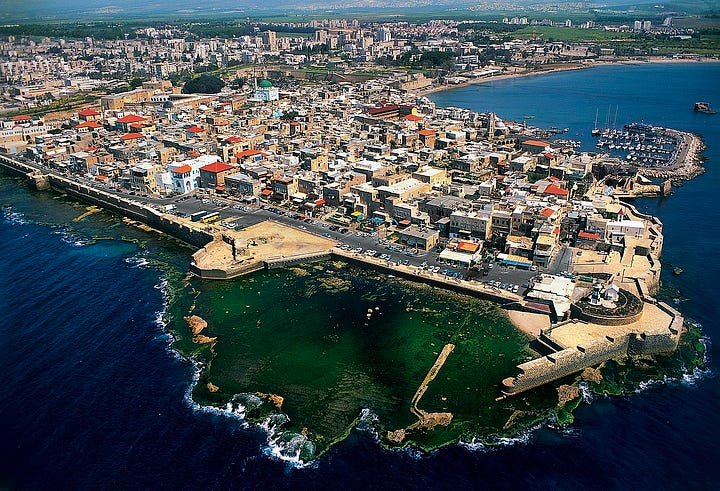
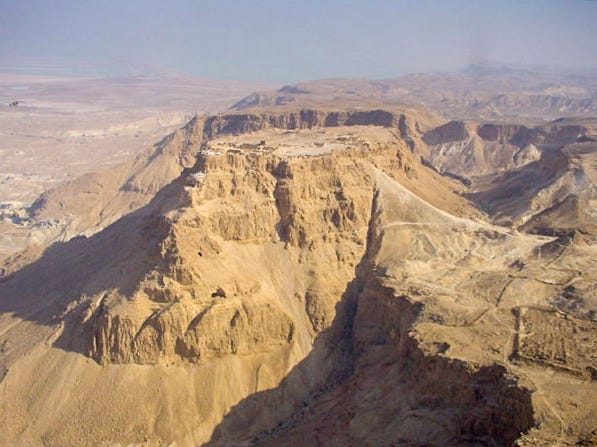
2002
January 2 2002: Shayetet 13 commandos capture the Palestinian Authority owned freighter “Karin A” in the Red Sea. The ship was on her way to the Gaza Strip loaded with 50 tons of weapons from Iran, intended for use against Israel. The weapons found on the ship include Katyusha rockets Spigot anti tank missiles and tons of high explosives.
January 9 2002: Two Hamas gunman attack an IDF outpost in southern Israel and kill four soldiers before being killed themselves.
January 12 2002: The IDF plants a roadside bomb near the house of the leader of the al-Aqsa Martyrs’ Brigade, Ra'id Karmi near the West Bank city of Tulkarm. He is killed when his car drives by and the bomb is detonated.
January 18 2002: An al-Aqsa Martyrs’ Brigade gunman throws hand grenades and fires into a crowded banquet hall in Hadera where a bat mitzvah is just ending. Six Israelis are killed and 33 wounded before the attacker is killed.
January 19 2002: In retaliation for the Hadera bat mitzvah shooting the day before, IDF Engineers use explosives to destroy the five-story headquarters and transmission tower of the Palestine Broadcasting Center in Ramallah. The Israeli Government later singled out PBC for broadcasting material deemed to be anti-Semitic and inciting violence against Israeli citizens during the Second Intifada.
January 22 2002: The IDF raids a explosives factory in the West Bank, four members of Izz ad-Din al-Qassam Brigade are killed in the raid including the IQB leader, Yusaf Suragji.
January 22 2002: An al-Aqsa Martyrs’ Brigade gunman opens fire on a West Jerusalem street. Two Israelis are killed before the attacker is shot dead by police.
January 25 2002: An Islamic Jihad suicide bomber blows himself up in crowded pedestrian mall adjacent to the abandoned old Tel Aviv Bus Station. 20 people are seriously injured.
January 27 2002: An al-Aqsa Martyrs’ Brigade (AMB) suicide bomber blows herself up on Jaffa Street in Jerusalem. One Israeli is killed and 100 are wounded. This was the first time a PLO group has used female suicide bomber. The bomber, Wafa Idriss had been working as a volunteer with the Palestinian Red Crescent and had used her ambulance to get through two military check points before the bombing.
February 4 2002: A IDF AH-1 Cobra helicopter fires two missiles at a car near Rafah, killing five members of the PFLP.
February 10 2002: Two Hamas gunmen kill two soldiers and wound four others, outside an army base in Beersheva before being shot dead.
February 14 2002: the AMB and PFLP both claim responsibility for a roadside bomb in Gaza which destroys an Israeli Merkava tank and kills 3 soldiers.
February 16 2002: A PFLP suicide bomber blows himself up in a pizzeria in a mall in the West Bank settlement of Karnei Shomron. Three teenagers are killed and 27 people are wounded.
February 16 2002: The IDF uses a remotely detonated car bomb to kill local Hamas leader Nazih al-Siba' in Jenin.
February 19 2002: An AMB gunman kills six Israeli soldiers at an army outpost north of Jerusalem. The gunman escapes.
February 19 2002: The IDF attacks Yasser Arafat’s compound in Gaza City, firing a missile into the compound and killing four members of Force 17. Later in the day, 18 artillery shells land in the compound, killing five Preventive Security Force, (The PA version of the FBI), officers.
February 20 2002: After repeated suicide attacks coming from Nablus, the IDF send in force into the city. 16 suspected terrorists are killed.
February 22 2002: After a small explosion in a supermarket in the West Bank settlement of Efrat, an Israeli shopper shot and killed a potential suicide bomber. When police arrived, they found a large bomb hidden underneath the Arab's jacket. A detonator had caused the initial explosion, but failed to ignite the bomb and the bomber was killed before he could do anything else.
February 28 2002: The IDF launches Operation Colorful Journey, an attempt to clear the Balata refugee camp and the city of Jenin of terrorists. Eleven Palestinians are killed, including Balata AMB leader Kayid Abu Mustafa and six PSF officers.
March 2 2002: Just after Sabbath in the Beit Yisrael neighborhood of Jerusalem when the streets were packed with worshipers leaving the Synagogue and two families were celebrating Bar Mitzvahs 19-year-old Mohammed al-Chouhani, a member of the al-Aqsa Martyrs' Brigade, blew himself up. Eleven Israelis were killed and 53 were wounded. Among the dead were eight members of the same family, including an infant and her six-year-old brother, a mother and her three-year-old son, and a 12-year-old boy.
March 3 2002: A sniper from AMB, kills seven soldiers and three settlers at a checkpoint near Ofra, the gunman is never caught.
March 4 2002: Another AMB gunman kills three Israelis in Tel Aviv, before being killed by police.
March 4 2002: In an unsuccessful attempt to kill Hamas politician, Hussein Abu Kuwayk, the Israeli army fires missiles at a truck in Ramallah, killing his wife and three children as well as two bystanders.
March 5 2002: IDF helicopters fire a missile at a car in Ramallah, killing three people, including AMB members Muhannad Abu Halawa and Fawzi Murrar.
March 7 2002: Five Jewish settlers are killed and 23 are wounded by a Hamas gunman at the West Bank settlement of Bnei Atzmona before he is killed by police.
March 8 2002: In the Gaza Strip town of Khuza’a Khan Yunis, the Israeli army kills 16 Arabs including PSF regional commander Major General Ahmad Mifraj. An additional 24 Arabs are killed in other incidents in the West Bank and Gaza Strip that day. The highest single-day death toll since the al-Aqsa intifada began.
March 9 2002: A Hamas suicide bomber entered the Café Moment coffee shop in the Rehavia neighborhood of Jerusalem about 330 feet from the residence of the Prime Minister. Immediately after entering the building, the suicide bomber detonated the explosives hidden underneath his clothes. The force of the blast completely destroyed the shop and killed eleven Israeli civilians and injured 54 people.
March 11 2002: The IDF raids the Jabaliya refugee camp. Troops blew up several metal workshops, which the army said were used to make rockets and mortars. Eighteen Palestinians died in and around Jabaliya, during Israel's three-hour raid, including several gunmen. Dozens of people were wounded.
March 12 2002: With the al-Aqsa Intifada in full swing, and following the raid on the Jabaliya refugee camp, the IDF send 20,000 troops and 150 tanks into Ramallah. Thirteen militants are killed.
March 14 2002: A month after a similar attack a roadside bomb in Gaza which destroys a Merkava tank, killing the three man crew. Both the AMB and the PFLP claim credit for the attack.
March 20 2002: Seven Israelis, four soldiers and three civilians are killed by a suicide bomber from Palestinian Islamic Jihad on No. 823 bus traveling from Tel Aviv to Nazareth.
March 21 2002: Three Israelis are killed and 86 others are injured when an al-Aqsa Martyrs’ Brigade suicide bomber detonated a bomb, packed with metal spikes and nails, in the center of a crowd of shoppers on King George Street in the center of Jerusalem. The perpetrator was 22-year-old Mohammad Hashaika, a member of Tanzim and a former Palestinian policeman. Later on, it was revealed that Hashaika was actually arrested for allegedly planning to carry out an earlier attack, but the Palestinian Authority released him a week before he carried out this suicide bombing.
March 27 2002: A Hamas suicide bomber disguised as a woman and carrying a suitcase enters the dining room of the Park Hotel in Netanya, during the annual Passover Seder arranged by the hotel for 250 guests. He detonates an explosive device in the suitcase, killing 30 people and wounding 140.
March 29-May 11 2002: Israel launches Operation Defensive Shield. Israel's stated goal for the operation was to stop terrorist attacks, the operation was launched two days after the Passover Massacre. The operation began with an Israeli incursion into Ramallah, where Yasser Arafat’s compound was besieged. This was followed by successive incursions into the six largest cities in the West Bank and their surrounding localities. The IDF moved into Tulkarm and Qalqilya on April 1, into Bethlehem on April 2, and into Jenin and Nablus on April 3. From April 3–21, strict curfews were enforced on civilian populations in the West Bank, and international personnel had their movement restricted, including, at times, the prohibition of entry to humanitarian and medical personnel as well as human rights monitors and journalists. In May 2002, Israeli troops withdrew from the West Bank cities, while maintaining cordons of troops around certain towns and villages, and carrying out raids on Arab-populated areas. The operation resulted in 30 Israelis killed and 127 wounded as well as 497 Arabs killed with 1,447 wounded and 7,000 detained.
March 29 2002: During the afternoon, Ayat al-Akhras, an 18-year-old Arab woman, approached the Kiryat Yovel supermarket in Jerusalem. The supermarket at the time was full of customers shopping for the weekend. Haim Smadar, the 55-year-old security guard who guarded the entrance to the supermarket and spoke Arabic, became suspicious after two Arabic women who usually sold vegetables outside the shop entrance had been warned by Akhras to leave. She detonated the explosives at the entrance to the store while struggling with Smadar, killing him and Rachel Levy, a 17-year-old Israeli girl. In addition, about 30 people were injured in the attack. Smadar managed to forcefully keep her away from the crowd, preventing a larger loss of life had the attack taken place inside the store. After the attack, it was discovered that she was also carrying an unexploded mortar round.
March 30 2002: An AMB suicide bomber detonates himself in a Tel Aviv café, wounding 32 people. President George W. Bush and Secretary of State Colin Powell, call on Yasir Arafat to condemn the wave of suicide bombings in Arabic, to his own people. Arafat goes on television and swears in Arabic that he will "die a martyr, a martyr, a martyr". Members of AMB state that they will refuse any form of cease-fire, and that they will continue suicide bombings of civilians in Israel.
March 31 2002: During the Passover holiday vacation, and despite a bombing just four days before, Haifa was crowded with families. Just before 3 pm, a Hamas suicide bomber detonated his bomb inside the Matza restaurant 16 people are killed (including two whole families) and 40 people are wounded. The owners of Matza were not worried about an attack on their restaurant because they were Israeli Arabs, and its multi-ethnic nature was thought to make it an unlikely choice for a terrorist attack.
April 2002: The Israeli government approves the construction of a continuous security barrier which would separate the West Bank from Israel. It was also thought that the wall would prevent the infiltration of Arab terrorists, particularly suicide bombers into Israeli population centers. Palestinian Arab terror attacks on Israelis subsequently drop by 90%.
April 9 2002: In the Jenin refugee camp, thirteen Israeli soldiers are killed, when a Hamas terrorist blows up their guardhouse.
April 27 2002: Two Hamas fighters in Israeli army uniform kill five Jewish settlers in Adora.
May 7 2002: A Hamas suicide bomber detonated a hidden explosive device in a pool hall full of people in a industrial area of Rishon Lezion, five miles south of Tel Aviv. 15 civilians were killed and 55 were wounded.
May 19 2002: A suicide bomber disguised as an IDF soldier managed to slip through several police checkpoints, with the assistance of a female collaborator. The suicide bomber who wore an explosive belt hidden underneath his clothes, packed with nails and bolts, detonated the explosive device at the entrance to the main open market of the Israeli coastal city of Netanya. Two Israelis are killed and 50 are wounded. The PFLP claims responsibility.
May 22 2002: Two Israelis (one of them a teenager) are killed in an AMB suicide bombing in Rothschild Street in the center of Rishon LeZion.
May 22 2002: Israeli helicopters fire missiles into the Balata refugee camp, killing the Nablus al-Aqsa Martyrs' Brigade commander Mahmud Titi. Two other AMB members and a bystander are also killed.
May 27 2002: An Israeli woman and her 14 month old granddaughter, are killed and 37 injured when an AMB suicide bomber detonated himself near an ice cream parlor outside a shopping mall in Petah Tikva. The bomber was the cousin of the Nablus AMB commander who was assassinated on May 22.
June 5 2002: Fourteen soldiers and three civilians, are killed when a car packed with explosives, struck the No. 830 bus traveling from Tel Aviv to Tiberias at the Megiddo Junction near Afula. The car strikes the bus near the gasoline tank of the bus, causing it to burst into flames. Most of the casualties are IDF soldiers who are on their way to their bases. Palestinian Islamic Jihad claims responsibility for the attack.
June 11 2002: A suicide bomber sets off a bomb in a restaurant in the Israeli coastal suburb of Herzliya, killing a 14-year-old Israeli girl who was walking past the restaurant and wounding 15 others. Al-Aqsa Martyrs Brigades claimed credit for the attack. The bomber was a 30-year-old Arab named Omar Zayadeh from Madama in the West Bank. In 2003, Israeli troops demolished the home of bomber. In 2010 the Palestinian Authority built a monument honoring the bomber in Madama. The monument, in the form of a pyramid, features portraits of Yasser Arafat and of the bomber. Below the bomber's portrait are the words, "The heroic Shahada, Omar Muhammad Ziyada who carried out the heroic Herzliya operation on June 11, 2002.”
June 18 2002: Muhammad al-Ghoul a Islamic law student from Bethlehem boards bus No. 32A in Jerusalem and blows himself up. 19 Israelis are killed and 74 are wounded. Hamas claims responsibility.
June 19 2002: On Wednesday, shortly after 7:05 am. A Hamas suicide bomber got out of a red Audi next to the bus station in Jerusalem's French Hill neighborhood. Because the bus station had been targeted in the past, it was guarded, the two Border Police on duty, chased the suspect, but the suicide bomber managed to run past them, straight into the middle of a crowd of people waiting for the bus. When he detonated the explosive device that he was carrying in a bag, seven people were killed and 50 were wounded.
June 19 2002: The Israeli army starts barring all Arabs with West Bank ID cards, from entering Jerusalem.
June 20 2002: Two terrorists arrived at the West Bank town of Itamar shortly after 9:00 pm and started shooting in all directions. They then broke into a home, and murdered a mother Rachel Shabo (age 40) and her three children: Neria (age 15), Zvika (age 12) and Avishai (age 5). One of the terrorists shot and seriously injured two other children, Asahel (age 10) and Avia (age 13). The settlements' security unit was alerted as soon as they heard the gunfire. They exchanged fire with the attackers and they were the first team that attempted to rescue the civilians trapped in the house. The commander of the security squad, was killed attempting to rescue the Shabos while the terrorists barricaded themselves in the house. The house was surrounded by Border Police and IDF forces who exchanged fire with the militants. Yamas (Israeli SWAT team) forces also arrived at the site and began preparing to breach the house. An hour later the Yamas team entered the house. During the firefight one of the terrorists was killed and the second, attempted to flee the house through a window but was killed after a brief battle in a nearby house. The PFLP claimed credit for the attack.
June 22 2002: The IDF launches Operation Determined Path as a follow-up to Operation Defensive Shield. In the first phase, heavy forces entered the West Bank towns and took up positions. The IDF imposed a curfew and arrested wanted persons. After a few weeks, the fixed positions were abandoned (except in Nablus), but the units kept entering towns almost nightly to make arrests. On July 7, Israeli Defense Minister, Benjamin Ben-Eliezer, said that in the course of "Determined Path", 150 wanted persons were arrested, including ten potential suicide bombers, and fourteen explosive labs were shut down. After two weeks, the IDF called it a "great success", citing the decline in Arab attacks and the absence of Israeli casualties.
June 24 2002: After the June 19, French Hill suicide attack, the US halts all direct dealings with Yasser Arafat, who funded the attack.
July 16 2002: Nine Israelis, including an infant, are killed in an attack on a bus traveling from Bnei Brak to Emmanuel in the northern West Bank. Two roadside bombs damaged the tires of the bus 500 feet from the town's entrance, forcing it off the road. The explosion also damage the bus doors, trapping the passengers inside. The militants then started firing through the unprotected roof and throwing grenades through the narrow upper windows. The AMB and PFLP claim responsibility.
July 17 2002: Two Islamic Jihad suicide bombers blow themselves up 30 feet apart on a street in the Neve Shaanan neighborhood of Tel Aviv. Five people are killed and 40 are wounded.
July 22 2002: An IAF fighter drops a one-ton bomb on an apartment in a densely populated neighborhood of Gaza City, killing Salah Shehade, the leader of the Izz ad-Din al-Qassam Brigade. Shehade was on top of the list of Israel’s most wanted terrorists and had masterminding several terror attacks against Israeli soldiers and civilians in the Gaza Strip and in Israel, during the al-Aqsa Intifada. The apartment building is flattened and 14 civilians are killed, including Shehade's wife and nine children The attack occurred hours after the al-Aqsa Martyrs' Brigade, Tanzim, Hamas and Palestinian Islamic Jihad had agreed to declare a unilateral cease-fire.
July 23 2002: The Knesset passes the Tal Law by a 51-41 majority. The law gives legal status to the exemption from mandatory military service granted to Israeli Ultra Orthodox Jews studying at a yeshiva (a religious school).
July 31 2002: A Hamas terrorist leaves a bag containing a bomb in the cafeteria of Hebrew University of Jerusalem. Nine students are killed (four Israeli, four American, one dual French/American), and injuring 85 others (including Arabs).
August 4 2002: Nine people, including two Israeli Arabs and two guest workers from the Philippines are killed in a Hamas suicide bombing on a bus traveling from Haifa to Safed. Forty others, mostly soldiers, are injured.
August 7 2002: In Khan Yunis, an Israeli army sniper kills Hamas militant Hussam Hamdan, son of top Hamas political leader Ahmad Nimr.
August 14 2002: In Tubas, a city in the West Bank, Israeli helicopters fire missiles into the house of senior Hamas member Nasir Jarrar, killing him. He was confined to a wheelchair after losing one arm and both legs in previous Israeli attempts to kill him.
August 14 2002: Marwan Bargouti, a Tanzim leader is sentenced to five life sentences after being convicted by a civilian Israeli court on charges of murdering Israeli civilians and membership in a terrorist organization.
August 17 2002: Israeli Security Forces expose a cell of Hamas operatives in East Jerusalem that had been responsible for the attack at the Hebrew University of Jerusalem. The members had been planning another attack at the time of their arrest.
August 19 2002: The IDF hands control of Bethlehem back to the Palestinian Authority.
August 19 2002: Catherine Bertini, Personal Humanitarian Envoy of the Secretary-General of the United Nations issues a report, which came to be known as the Bertini Report, on the humanitarian situation in Israel and “Palestine” as well as setting goals for Israel and the Palestinian Authority to achieve, as part of the ongoing Oslo Peace Plan. Goals include easing checkpoint restrictions on PA ambulances, not using emergency vehicles for transportation of militants or military goods, Access to clean water and education as well as a requirement for the PA to police militant activity as much as possible.
August 20 2002: Israeli commandos assassinate Muhammad Saadat, second in command of the PFLP and brother of the head of the PFLP Ahmad Saadat.
August 31 2002: In Tubas Israeli helicopters fire four missiles at a car in an attempt to assassinate local AMB leader, Jihad Sawafta. The strike kills three other people in the car and two children in a house that one of the missiles hits.
September 19 2002: A Hamas suicide bomber kills five Israelis and wounds more than 50, when he detonates his bomb on a bus next to Tel Aviv’s Great Synagogue.
September 24 2002: Senior Izz ad-Din al-Qassam Brigade member Yasin Nassar and a member of al-Aqsa Martyrs' Brigade along with eight other militants are killed in an IDF raid into Gaza City and Bayt Lahia.
October 9 2002: Daniel Kahneman receives the Nobel Prize in Economics for his work in Prospect Theory. He is the first Israeli Nobel laureate in economics.
October 11 2002: Two US Marine Embassy Guards overpowered a would-be suicide bomber who had tried to enter a crowded café nearby on the Tel Aviv beachfront. The security guard at the entrance to the café searched him and when he found a explosive vest, the man ran away and the guard chased him while calling for help from security personnel of the American Embassy. The Marines overpowered the man and called police, and a bomb squad removed the man's explosive vest and it was "neutralized."
October 12 2002: In an attempt to kill Tanzim commander Nassir Ubayyat with a cell phone laden with explosives, Israel kills his brother, AMB member Muhammad Ubayyat, instead.
October 17 2002: The IDF shells a residential area of Rafah. Six Arabs are killed including two women, two teenagers and a nine-year-old.
October 21 2002: When a bus stopped at the Karkur Junction near Hadera, a jeep loaded with an estimated 220 pounds of TNT, rammed the back of the bus and exploded. A fire broke out, causing the ammunition carried by soldiers who were riding the bus to cook off. The explosion also ignited the fuel tank, leaving the bus completely gutted. The blaze initially prevented the police and rescue workers from approaching the bus, which was reduced to a blackened skeleton. Seven Israeli soldiers and seven civilians were killed and 50 passengers were wounded. The military wing of Palestinian Islamic Jihad, the Al-Quds Brigades, claimed responsibility for the attack, saying that it was carried out by Ashraf al-Asama, 18, and Mohammed al-Hasnin, 19, both from the West Bank city of Jenin.
October 27 2002: Three soldiers were killed and 20 people were wounded when a suicide bomber approached a gas station cafeteria at the entrance to the West Bank settlement of Ariel. The gas station cafeteria was full of Israeli soldiers waiting for their bus. As the suicide bomber approached the gas station, a worker at the cafeteria spotted him and informed her boss that the man looked suspicious. The owner of the cafeteria and an attendant at the gas station approached the suspect, identified him as a terrorist, wrestled him to the ground and pinned his arms, preventing him from detonating his explosive device. The two good Samaritans saw that the suspect was wearing an explosives belt underneath his shirt and screamed for help. Three soldiers ran to assist them subdue the terrorist but in the struggle the explosive belt was detonated. Hamas claimed credit for the attack.
November 15 2002: Palestinian Islamic Jihad gunmen ambush a patrol of soldiers, border police and settler security officials close to the Ibrahim Mosque in Hebron. Four soldiers, including the IDF commander in Hebron, Colonel Dror Weinberg, five border police and three settlement guards are killed.
November 21 2002: A Hamas d suicide bomber blows himself up on a crowded bus in Jerusalem, killing eleven people, and wounding 50.
November 22 2002: Iain Hook a project manager with UNRWA left a voice message with Israeli authorities that Arab militants had "knocked a hole in the wall" and "pinned down" his men in the refugee camp of Jenin. During a gun-battle with Palestinian Islamic Jihad militants whom Israel says were firing at troops from inside the UN compound, an IDF sniper killed Hook when he mistook his cell phone for a handgun or a grenade, even though Hook was only 20 yards away and the sniper had a scoped rifle. The UNRWA immediately arranged for an ambulance to evacuate Hook but the IDF soldiers on the ground refused immediate access for the ambulance and then told them they would have to use an alternative route. Hook died on the way to hospital. Israeli Foreign Minister Benjamin Netanyahu telephoned the British Foreign Minister, Jack Straw, to express regrets over Hook's death. UN Secretary General Kofi Annan released a statement demanding that Israel punish those responsible for the killing. Israel, however, found that "no criminal act had been committed" and no criminal charges were filed. The US vetoed “with regret” a UN Resolution proposed by Syria condemning Israel for the killing; there were 12 votes in favor of the resolution, and 2 abstentions, in the 15 nation vote. United States ambassador John Negroponte said Syria and the Palestinians seemed "more intent on condemning Israeli occupation than on ensuring the safety of United Nations personnel.” More than sixty United Nations workers wrote a letter criticizing Israeli troops for "senseless" and "wanton" behavior, complaining of abuse and humiliation. Israel responded by releasing to newspapers what the New York Times called a "damning intelligence report" alleging UNRWA operations were being used as cover for "Palestinian terrorists", including smuggling arms in UN ambulances and hosting meetings of Tanzim in UN buildings. The United Nations internal report on the matter was the subject of controversy: the initial version stated that peace activists in the compound were bringing young Palestinian men into the compound through a hole in the wall. Following protests by UNWRA staff, the claim was dropped from the report.
November 26 2002: Israeli helicopter fire missiles in a house in the Jenin refugee camp killing the Jenin AMB commander Ala' Ahmad Sabbagh and the Jenin IQB commander Imad Nasharti.
November 28 2002: During primary voting in the 2002 election cycle, two gunman from al-Aqsa Martyrs' Brigade entered a Likud party polling station in the town of Beit She’an and threw grenades into the crowded polling station, before opening fire with AK-47s. Six Israelis were killed and 34 were injured, before police killed the gunman ending the attack.
November 28 2002: In front of the Israeli-owned beachfront Paradise Hotel, frequented almost exclusively by Israeli tourists near Mombasa Kenya, a car bomb explodes. The attack kills three Israelis and ten Kenyans and 21 Israelis and 60 Kenyans are wounded. 20 minutes earlier, an unsuccessful attempt is made to shoot down an Arkia Israel Airlines 757 chartered tourist plane taking off from nearby Moi International Airport, using a surface-to-air missile. No one is hurt on the plane which lands safely in Tel Aviv. No one claimed credit for the attacks but al-Qaeda was suspected of carrying them out.
December 4 2002: The IDF fires five missiles into a building in Gaza City killing Palestine Resistance Committee (PRC) member Mustafa Sabah, the inventor of an anti-tank bomb used in several attacks.
December 25 2002: In a similar incident to the killing of Iain Hook. The IDF shoots senior Hamas leader Talib Abu Hawash in Nablus. He bleeds to death after being denied medical attention over several hours.
December 26 2002: The IDF conducts multiple killings of Arab militants. In Tulkarm they killed local AMB head Jamal Yahya. In Ramallah, they killed Hamas member Bassam Ashqar. In Qabatiyya local Palestinian Islamic Jihad leader, Yusif Abu Rub, is also assassinated and on Ramallah, Mossad agents enter a hospital and kill Hamas terrorist, Samir al-Shamali, who was working as a guard. Six other Arab militants are also killed that day.
There it is, maybe the most violent two years in the history of Israel. In the next episode I will cover 2003 to 2005. As this is starting to wrap up I hope you are enjoying them or at least find them informative.

